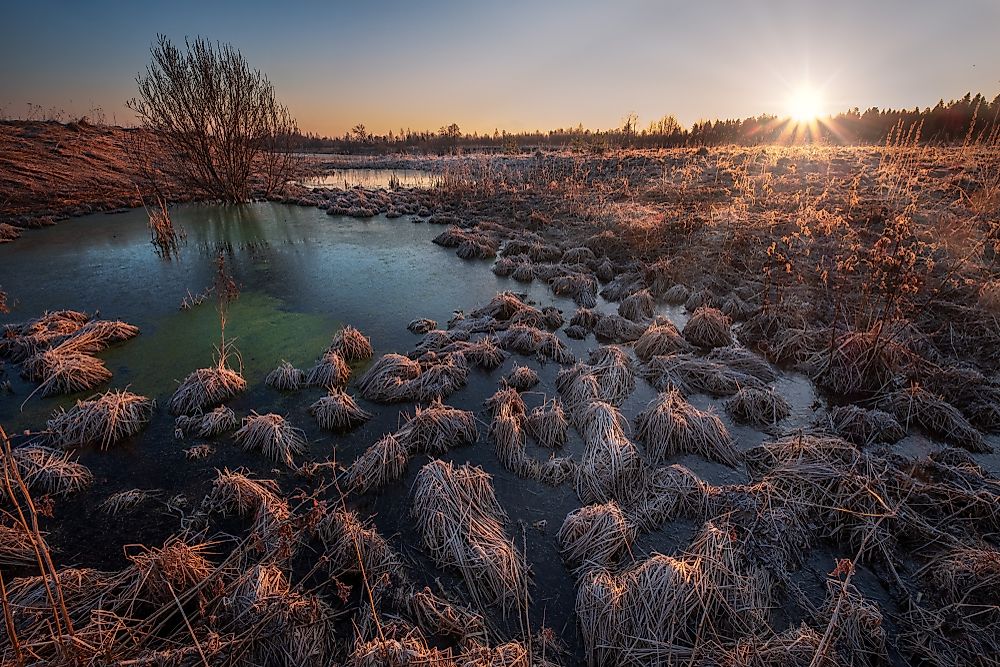What Is A Hummock In Geography?

A hummock refers to a small mound, hillock, or a knoll that occurs above the surface of the earth. The terms should not be confused with hummocky, which is a word that is used to describe a surface that is extremely irregular. Usually, these mounds do not go higher than 49 feet and tend to occur in groups. Generalizing these features is extremely complicated owing to the fact that they are extremely diverse in terms of their structure and formation.
Ice Hummocks
In some cases, an ice hummock, which is a boss or rounded ice knoll jutting out above the level of ice on a field, is formed. A hummocky may also form on ice should there be a slow and uneven pressure acting on the main bulk of the ice. Another cause for the formation of a hummocky on ice is an unequal structure and varying temperatures.
Swamp Hummocks
Another type of hummock is a swamp hummock, which is formed when tree trunks and branches growing in or around a swamp fall. When moss grows on the fallen tree parts, they form a feature jutting out above the level of the swamp. Between these hummocks, which are sometimes known as hammocks in the southeastern region of the United States, there are spaces known as hollows.
Bog Hummocks
A bog hummock is a type of hummock that has a shape resembling a low ridge of dry peat moss. Usually, this kind of hummock is part of another larger raised bog such as a plateau, string bog, palsa, or kermi. Between these hummocks are shallow alternating depressions called flarks.
Cryogenic Hummocks
In physics, the term “cryogenic” refers to the behavior and production of materials at low heat. There are various types of cryogenic landforms. Hummocks that form through this method go by different names in different places. For example, North Americans call them earth hummocks while Greenland and Iceland call them thúfur. As the name suggests, cryogenic hummocks form in areas where the ground is frozen and areas of permafrost.
These hummocks form in places where the soil is fine and has light or moderate vegetation growing. Another requirement for their formation is low relief in areas where there is enough moisture for the process. Unfortunately, there is not much data about the formation process since they can also occur in a variety of environments with cold grounds. However, geologists agree that they are polygenetic.
One widely accepted theory for their formation is the one about differential frost heave, which focuses on irregularities in the ground. These irregularities cause soils material to move upwards during the winter as the soil freezes. Despite its wide acceptance, there is still limited evidence. Other theories suggest that they from the cryoexpulsion of clast or convection processes in the soil that cause the soil to come up and form the mounds.
Debris Avalanche Hummocks
These hummocks form after a huge amount of debris piles somewhere. This debris could be from processes such as landslides, volcanic action, and others. The size of the hummock usually depends on the distance from the source. If they form close to the source, then they will be bigger.











